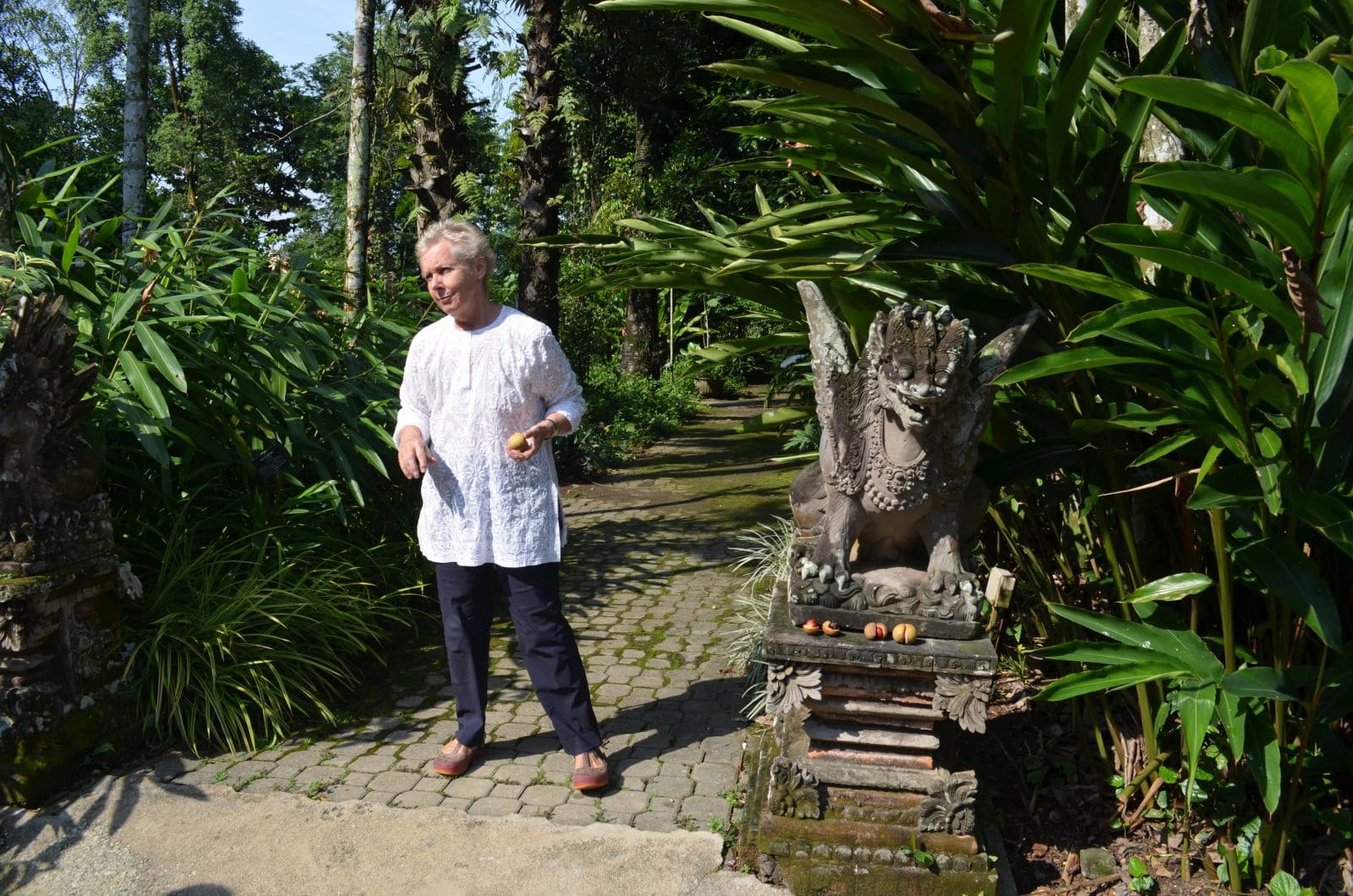
Rimbun Dahan is the home of architect Hijjas Kasturi and Angela Hijjas, in the village of Kuang near Sungai Buloh. It comprises a private arts centre on a 14-acre site. This includes the main house, basement gallery, dance studio and artists’ studios and apartments. The house and gallery are the centre of the artists’ residency programme for ASEAN, Australian and Malaysian artists supported by the Hijjas family and the architectural practice, Hijjas Kasturi Associates.
Hijjas Kasturi’s other claim to fame is for designing, among others, the Telecom Tower, Putrajaya Convention Centre and Lot 10. He built the house here using steel rather than timber in deference to Malaysia’s dwindling hardwood forests. Angela Hijjas has not only designed and planted the indigenous garden but, far beyond these 14 acres, she has a Green Turtle conservation project at Chendor Beach where, just a short while ago they found, dug up and reburied in the hatchery 5,880 Green Turtle eggs – within 24 hours to ensure they have the largest energy reserves to start their journey.
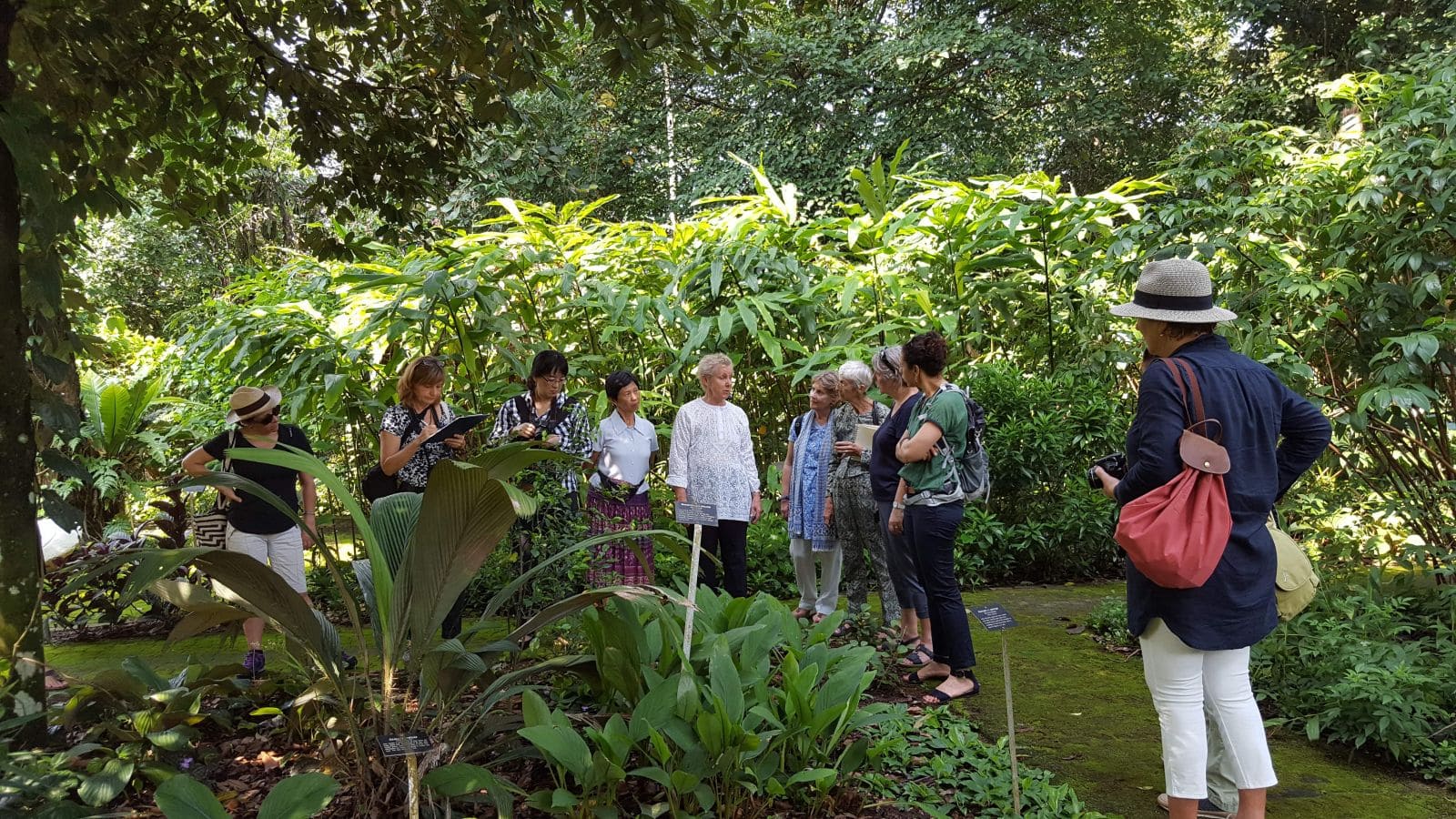
We were all delighted when Angela took us on a very detailed tour of the garden, which she has developed in a Malaysian style of landscaping using indigenous planting material from South East Asia. Collections are ethno-botanic, palms, species orchids, medicinal and fragrant plants. Objectives include organic and sustainable cultivation to encourage birds and animals to use the garden, which is open to the public when there is an exhibition on display.
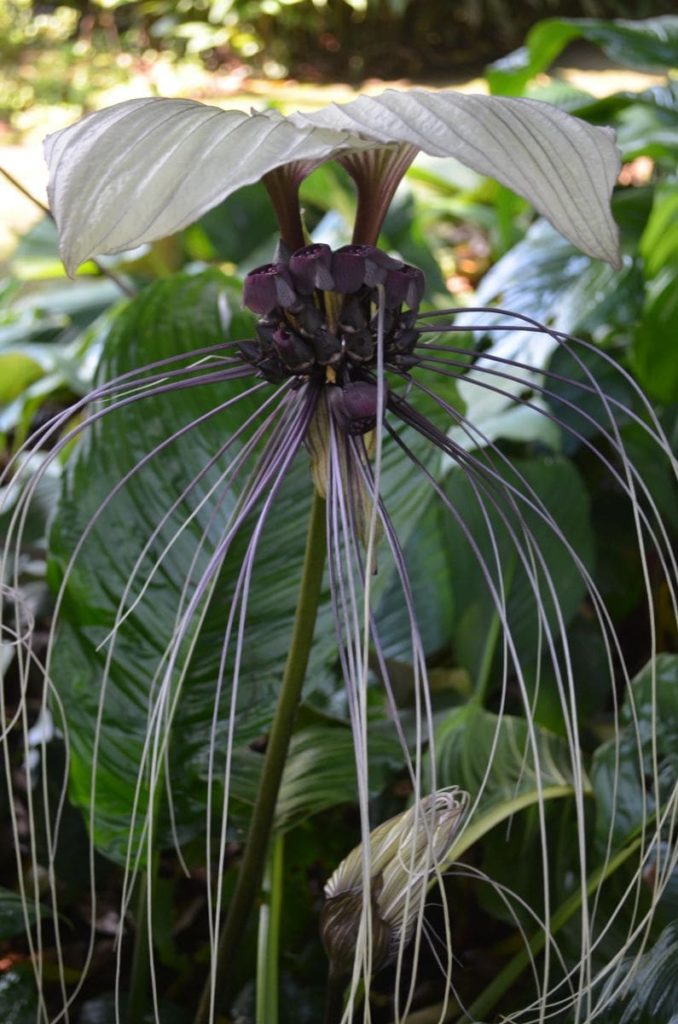
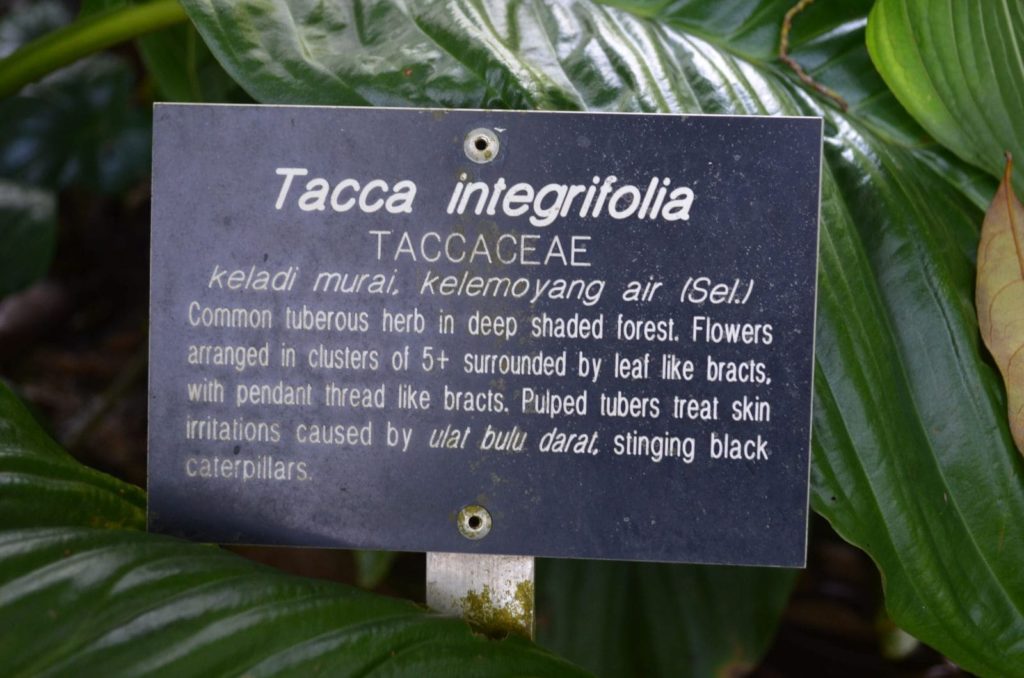
Angela planted Malaysian species to focus on local biodiversity, plants and animals. Malaysian plants lack showy flowers: fragrance is more effective for pollination when surrounded by dense forest. Indigenous species provide everything needed to survive in the kampung and underlie everything in Malay culture. The most beautiful flower I think we all agreed was Tacca integrifolia (left). It is a member of the yam family and is sometimes called the bat lily neither name does it justice! We thought it should be the national flower instead of the Bunga Raya, which originally came from China!
We were fascinated to hear from Angela that they kept the soil that was dug out when they excavated under the main house. The soil was heavy clay – not ideal for new plantings so, using old timber and new petrol, they fired the enormous heaps. The result is burnt earth, ideal for planting. Some of us wondered if we could do the same in our gardens (though on a smaller scale). The burnt earth is supplemented by compost and chicken dung. Pesticides are not used. Angela broke small leaves off some plants so that we could try to identify the herbs. The choice of plants has cultural overtones; for example Pinang palms and Areca catechu are reminiscent of the traditional ‘tapak sireh’, the betel nut that was offered to guests.
Gardening techniques vary. There is more work where species are tried out for hardiness before being planted elsewhere and where vegetables and herbs require more attention. During dry periods this area is watered with water pumped up from the ponds at the front of the house. Further away, the landscape is less maintained. Grassed pathways and spaces are mown only periodically. Prunings and sweepings are left in piles for white ants to break down, providing food for pangolins and refuges for small animals.
After our wonderful tour of the garden with Angela to guide and teach us, Syar Alia, the Arts Manager of Rimbun Dahan, led us to three houses set in an indigenous garden. Two are 19th century traditional Malay houses: Rumah Uda Manap is from Perak and Rumah Penang from Penang. The third house, Rumah Balai, was constructed on the site using other historic material. The three houses are available for rental via AirBnB.
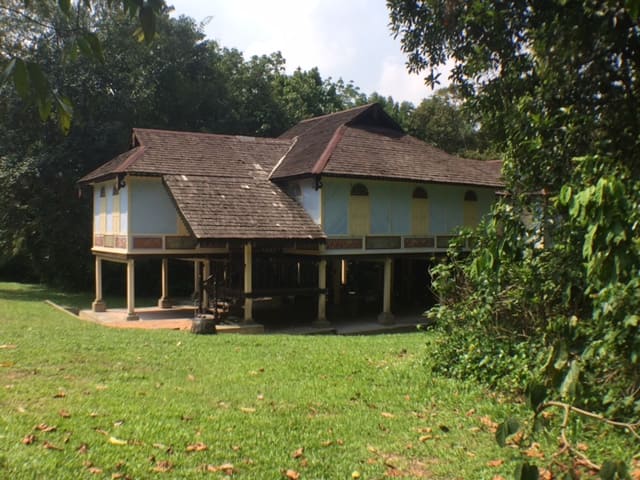
Syar guided us around Rumah Uda Manap, which was built about a hundred years ago on the banks of the Perak River. She told us the design is typical of Perak, but its decoration is unique. Carved wall panels and window shutters feature Chinese motifs, dragons, phoenixes and calligraphic characters combined with flowers and birds. By the time the house was moved to Rimbun Dahan in 1998, it was derelict. The roof and floors had collapsed, but most of the structural members were sound. Wherever possible, old timber was used in the restoration.
Rumah Penang probably dates from the early 20th century. It was originally located in Jalan Perak, Georgetown, Penang. The house was bought for the value of its timber floor supposedly chengal mas. It was demolished after documenting it and what could be removed was sent to Rimbun Dahan.
Syah explained that the houses are used as accommodation for the residency programmes for artists and writers, which can last between one month and one year. Some bring their families to live with them.
Angela Hijjas and Hijjas Kasturi are grateful for the opportunities to speak at the openings of art exhibitions in KL and to host exhibitions in the Underground Gallery at Rimbun Dahan. This gives them the chance to support the development of artistic practice in Malaysia and to share the objectives of the arts programme at Rimbun Dahan with the general public.
Write-up by Judyth Gregory-Smith. Photographs contributed by Monica Hartmut, Vlasta Pomykalo, Margo Rosenberg and Alejandra Barbosa
